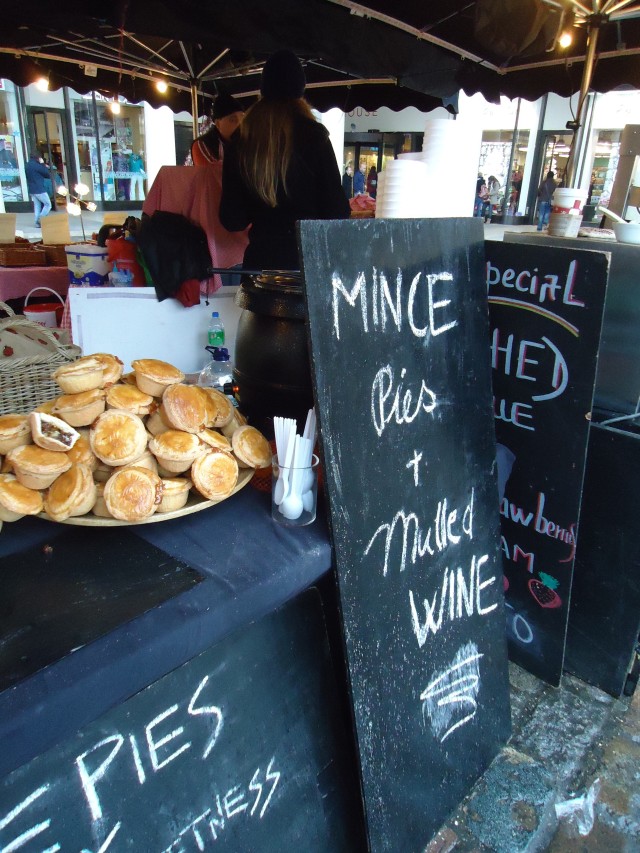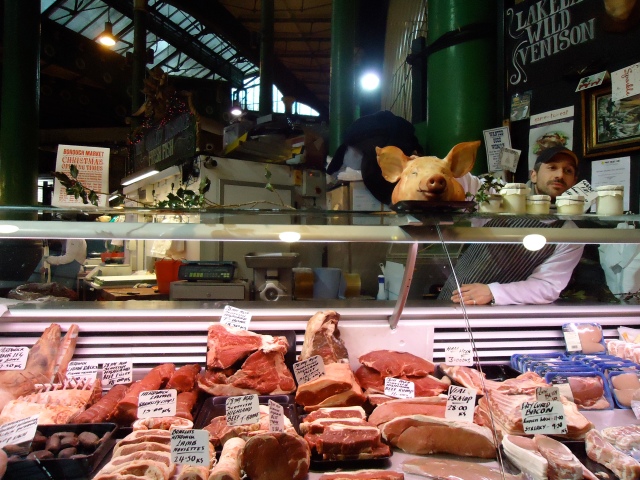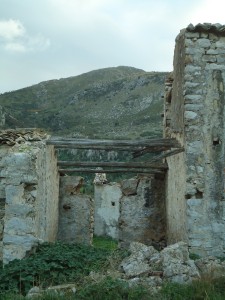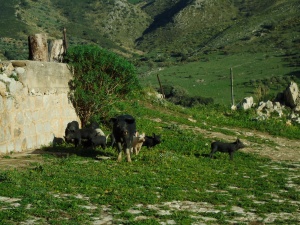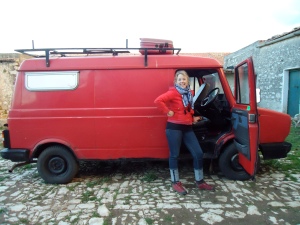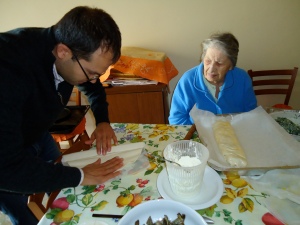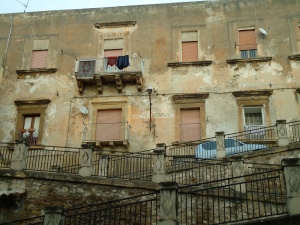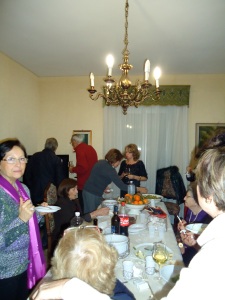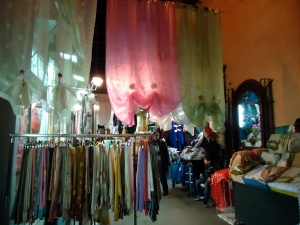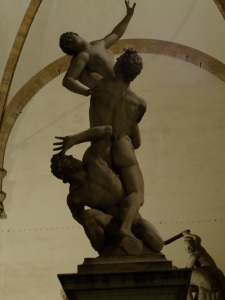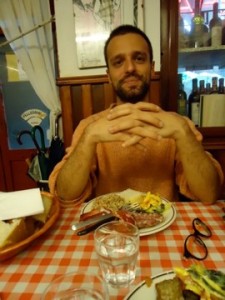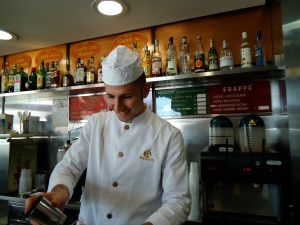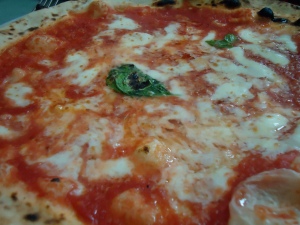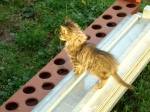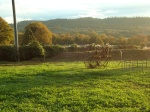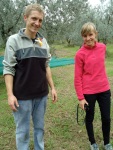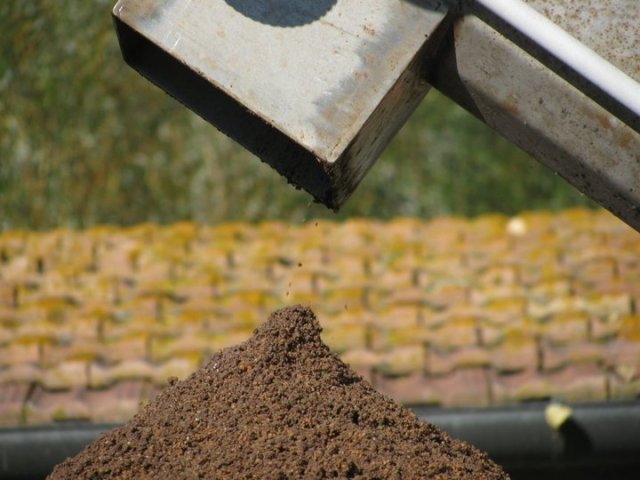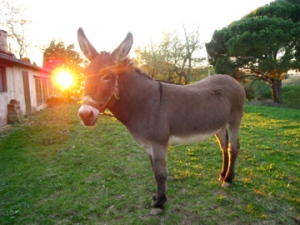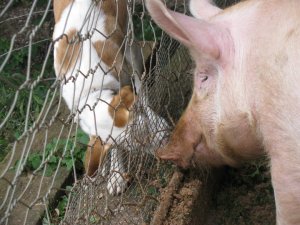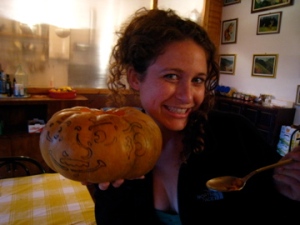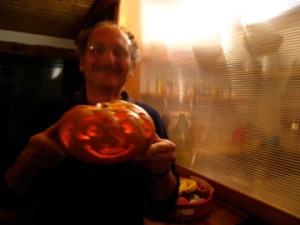(This story, which I wrote for BootsnAll, sums up much of my experience at my last — for now — WWOOFing farm in Italy)
“Oh Baba!” Massimo sighed as he lugged a heavy load of firewood into the house. Twenty-five years a farmer and fifteen a yogi, Massimo cried out to his guru in the moments of struggle most of us express through less inspired four letter words.
I was lying on my bedroom floor like a corpse, covered by one of the six wool blankets I slept with. My room was on the shady side of the house, and without the wood stove burning, it was too chilly to lie down in single layer yoga wear. This was my ten-minute savasana, the resting time after our morning asanas. Massimo, my current WWOOF host and yoga instructor, insisted that this was the most important part of the practice (though he was too busy this morning to relax for the full ten minutes). He also suggested that I refrain from touching water by washing or drinking for fifteen minutes. He explained that the exercises, mostly stretches and gyrations, activated glands throughout the body which released oils that did wonders for the skin. I didn’t quite get it, but my mind was open and my 7:30am body still sleepy, so I gleefully sank into my savasana.
With the energy and impulsiveness of a 17 year old and the insights and wisdom of 70 year old; bare feet that never got cold, tan skin, bright eyes and gray hair, Massimo seemed ageless. From the moment he picked me up at the Chiavari train station, he had shared his musings in English-speckled Italian. I’d probe him with questions, curious about his philosophy on communal living (it’s the ultimate lifestyle he is striving to create at his home, Casa del Sole) and healthy eating (one of the bigger ideas is that different foods feed different Chakras; one of the smaller ideas is that garlic is a medicine, not a food). Sitting without worrying isn’t my strong suit, but I’d try to quiet my mind for evening meditation. Hearing, “You are but a drop of water in the ocean,” is particularly soothing when it’s raining outside and the words are in Italian.
The 17 year old bellowed for the “Americana” to come outside, and as I joined him by the potatoes, the older man pushed him out of the way to poke fun at me by singing ‘50s Neapolitan star Renato Corosone’s “Tu vuò fa l’ Americano.” Tucked deep in the lush mountains of Liguria, Casa del Sole was isolated save for the neighbors across the valley. The terraced land burst with a thousand shades of green, broken only by plots of soil and stonewalls. We planted five rows of potatoes, Massimo digging up soil and me following behind, placing small potatoes from last harvest roots face up.
We followed the grassy footpath the next terrace down. To our left were arugula, leeks and chard and to our right, a forest of olive trees. With a small stream of water running between the trees and a tenacious streak of sun pushing through the clouds to light the morning dew, the grove looked nothing short of enchanted. All was silent except for the water trickling, birds chirping, roosters crowing and Massimo’s constant crooning – a mash up of his mantra and classic Italian love songs. I gave an impressed ”Bravo!” and he bellowed louder. “This is why I must live in the mountains.”
Using a knobby olive branch staff as a pointer, Massimo identified everything around us. “Cicoria,” he poked the ground where I was about to step, “is delicious fresh.” I walked more lightly with each step as Massimo revealed the food all around me. It wasn’t just under the soil where the carrots grew, or in the plots of broccoli and spinach. It was in the paths between crops, and in the soil between the stones of terrace walls.
With enlightened eyesight, I saw that the walls were thriving organisms, crawling with life. “Pimpinella,” Massimo stuck his knife between two stones and cut a cluster by its hairlike roots, “is like melon.” I nibbled the clover-like leaves and, to my shock, tasted honeydew. These herbs weren’t just edible; they were nuanced. There was a reddish, bristly, bitter cousin to the fern and a rounded, lime green leaf with hints of hazelnut. Had I just discovered detox’s answer to winetasting?
We filled three baskets with nothing but wild herbs; two for the farmers market in Genoa and one for us. I felt energized and at ease. Maybe it was the asanas, maybe it was the mountains, or maybe it was the fact that these three days were the longest I’d gone in months of Italian countryside life without wine twice daily. I’ll go with a combination of the first two (I like my lunchtime wine). After much snipping, soaking, a squeeze of lemon and a drizzle of Casa del Sole olive oil, our primo piatto of wild herbs was ready. Between the hunting, gathering, cleaning and chopping, I’d spent more time preparing a simple plate of raw greens than I’d ever spent cooking a whole dinner in New York. And oh Baba, was it good.








